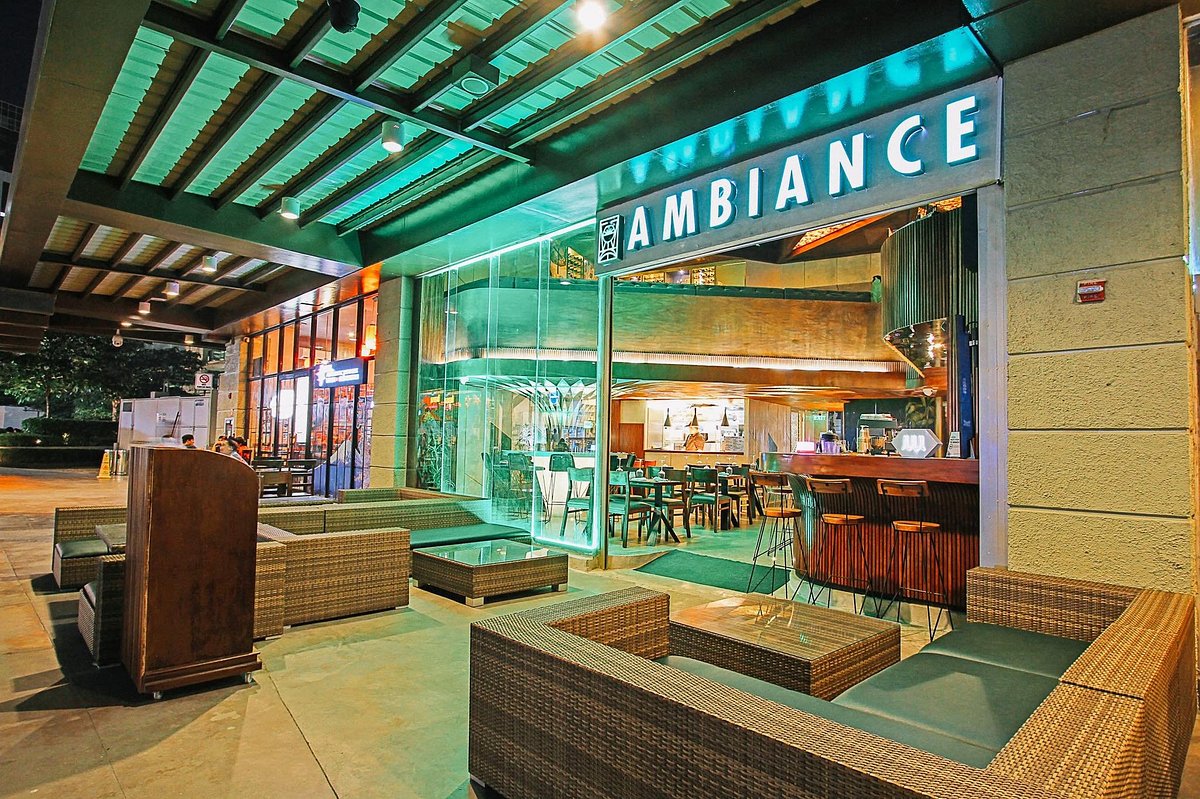Asian Fusion Restaurant: A Distinct Dining Experience in the Heart of Islamabad
Wiki Article
Savor Genuine Asian Food With a Pan-Asian Twist for a Culinary Adventure
Embarking on a cooking trip via genuine Eastern cuisine, boosted with a Pan-Asian spin, offers a special chance to check out the rich tapestry of tastes that specify the area's diverse culinary customs. As you consider these tempting meals, consider the social stories and historical impacts that form them, each bite providing a story waiting to be found. asian fusion restaurant.
Exploring Pan-Asian Flavors
In the realm of global gastronomy, Pan-Asian food stands out for its remarkable diversity and the harmonious interaction of flavors from various Oriental societies. This cooking method celebrates the rich practices and special active ingredients found throughout the continent, developing a tapestry of tastes that is both rewarding and fascinating. Trick to Pan-Asian food is its ability to stabilize different tastes-- pleasant, salted, spicy, and sour-- while highlighting the freshness and high quality of each ingredient.From the umami-rich soy sauce of Japan to the intense chili peppers of Thailand, Pan-Asian cuisine provides a considerable palette of tastes. These aspects are usually integrated in innovative means, enhancing dishes with layers of complexity. As an example, making use of fragrant herbs such as lemongrass and cilantro, usual in Vietnamese and Thai food, includes a rejuvenating illumination to meals, while the unification of coconut milk provides a luscious, rich texture.
The focus on fresh fruit and vegetables and fragrant seasonings ensures that each dish is not just a feast for the palate yet also for the detects. Pan-Asian cuisine invites diners to start a culinary trip, discovering the huge and varied landscapes of Oriental gastronomy with every bite.
Fusion Dishes to Attempt
While Pan-Asian food is celebrated for its typical flavors, the modern-day cooking landscape is progressively accepting blend meals that blend these timeless elements with influences from other regions. This cutting-edge method not only honors the abundant heritage of Eastern cookeries however additionally presents novel preference experiences that appeal to contemporary tastes buds.
A prime instance of such a blend dish is the Korean-Mexican taco, where seasoned bulgogi beef is covered in a warm tortilla, topped with kimchi and a spicy gochujang-infused salsa. This mix weds the bold, tasty tastes of Korea with the vivid, fresh aspects of Mexican food. In a similar way, sushi burritos have acquired popularity, joining together the delicate artistry of Japanese sushi with the hearty, hand-held benefit of a burrito, often including combination active ingredients like tempura shrimp and avocado with a drizzle of wasabi mayo.
An additional significant dish is Thai curry ramen, which infuses the velvety, aromatic flavors of Thai curry into the soothing brew of typical Japanese ramen, developing an unified mix that entices the senses. These fusion recipes expand past simple uniqueness; they stand for a cooking dialogue between cultures, motivating exploration and development worldwide of Pan-Asian cuisine.
Crucial Components and Seasonings
To really value Pan-Asian cuisine, one have to recognize the essential active ingredients and spices that form its structure. This diverse culinary style draws from an abundant tapestry of Eastern traditions, utilizing an unified mix of textures and flavors. Key ingredients consist of soy sauce, fish sauce, and oyster sauce, which give a full-flavored umami deepness important to Eastern meals. Complementary to these are rice vinegar and mirin, offering a delicate acidity and sweet taste.Fragrant elements are essential, with garlic, lemongrass, and ginger being ubiquitous throughout various Pan-Asian recipes. These components give a great smelling base that boosts the complexity of tastes. Flavors such as star anise, cardamom, and cinnamon introduce heat and personality, resembling influences from areas like China and India.

Food Preparation Strategies and Tips
Grasping the art of Pan-Asian food needs knowledge with its distinct food preparation methods, each adding to the vivid tapestry of tastes this cooking practice is commemorated for. Central to these approaches is the stir-fry, a quick food preparation strategy that maintains the nutritional stability and brilliant colors of components. Using a frying pan, the stir-fry technique enables for even warm distribution, vital for achieving the characteristic texture and taste equilibrium of Pan-Asian meals.Another fundamental technique is steaming, particularly widespread in Chinese food. This gentle approach keeps the all-natural flavors and nutrients of ingredients, making it excellent for fish and shellfish and vegetables. Dumplings, a precious staple, frequently take advantage of steaming, leading to soft, succulent textures.
Cooking, likewise important, gives smoky depths to recipes such as Korean bulgogi or Japanese yakitori (asian restaurant isb). This technique often entails marinating active ingredients, allowing tastes to permeate deeply prior to cooking over an open fire or warmer
Lastly, mastering the art of balancing flavors-- pleasant, sour, salted, bitter, and umami-- is essential. Properly layering these aspects can elevate a meal from ordinary to remarkable, offering a complicated and pleasing culinary experience that personifies the essence of Pan-Asian cuisine.
Eating Experiences Worldwide
Around the world, Pan-Asian food offers an unparalleled eating experience, commemorated for its rich tapestry of tastes and vibrant presentations. This culinary asian fusion restaurant sensation has actually gone beyond cultural boundaries, catching the hearts and palates of food fanatics worldwide. In cosmopolitan cities like New York, London, and Sydney, Pan-Asian restaurants function as melting pots where culinary practices from Thailand, Japan, China, and beyond merge, supplying restaurants with a diverse mix of meals that highlight the region's diversity.The international appeal of Pan-Asian cuisine hinges on its capacity to use both credibility and advancement. Cooks skillfully marry traditional active ingredients such as lemongrass, soy sauce, and miso with modern methods, resulting in recipes that are both acquainted and refreshingly brand-new. This fusion enables diners to begin on a culinary trip that values heritage while welcoming modernity.
Furthermore, dining experiences are elevated via thoughtfully developed atmospheres that show the principles of Pan-Asian aesthetics. From minimal Japanese-inspired interiors to vibrant Thai-themed rooms, each restaurant provides a distinct ambiance that enhances the culinary offerings. Because of this, customers are not merely taking in a meal but partaking in a cultural experience, making Pan-Asian dining a really worldwide sensation.
Final Thought
The expedition of Pan-Asian cuisine supplies an extensive understanding of the intricate interplay of flavors and culinary traditions across Asia. By embracing blend recipes such as Thai curry ramen and sushi burritos, the culinary trip not only highlights the versatility of typical ingredients however also showcases innovative modern-day techniques. This gastronomic journey, enhanced by vital spices and cooking approaches, provides an one-of-a-kind opportunity to value the cultural variety and cooking artistry that define Pan-Asian cuisine on an international range.Getting started on a culinary trip with authentic Oriental food, boosted with a Pan-Asian spin, supplies an one-of-a-kind possibility to discover the abundant tapestry of tastes that specify the area's varied culinary traditions.In the world of international gastronomy, Pan-Asian cuisine stands out for its exceptional diversity and the harmonious interaction of flavors from various Asian cultures. Key to Pan-Asian food is its capacity to stabilize different flavors-- pleasant, salted, spicy, and sour-- while highlighting the freshness and high quality of each active ingredient.

Report this wiki page